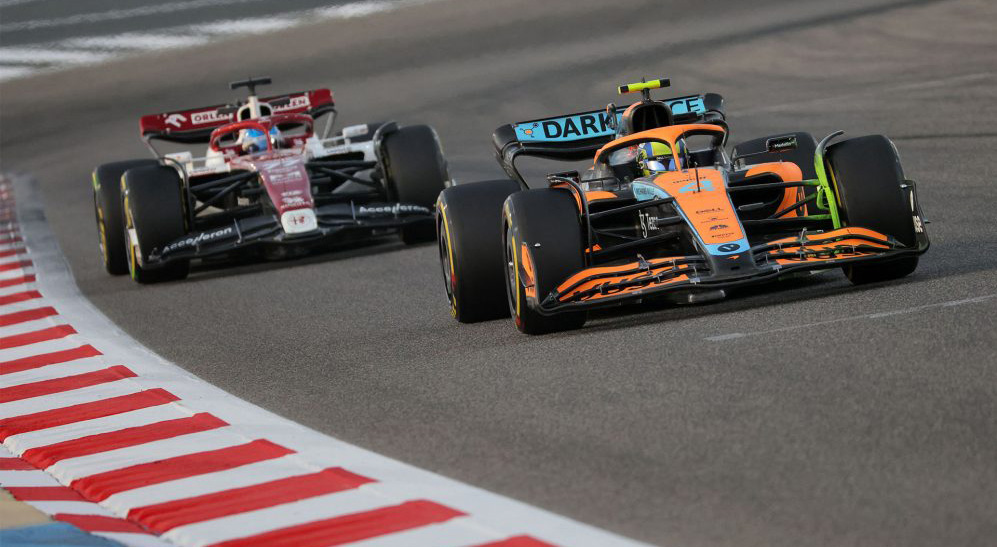Season four of Netflix’s Drive to Survive was released earlier this month
Season four of Netflix’s Drive to Survive (DTS) was released earlier this month, a compelling story showcasing Formula One (F1) racing on a global scale in a push to increase interest in the sport, particularly in Western countries. DTS demonstrates a new era of sports marketing, one centred around individual athletes.
Within F1, there are 10 teams of two cars each, meaning they each have two drivers. The teams and their drivers compete for two championships — the Drivers’ and Constructors’ Championship. Each of the 10 episodes centres around a different storyline, ranging from the inner drama of the new partnership of McLaren’s Lando Norris and Daniel Ricciardo, to the economics of teams and sponsorships of Haas’ Nikita Mazepin, to the fight for Mercedes’ second seat, and, of course, the battle between Red Bull and Mercedes (as well as their drivers Max Verstappen and Lewis Hamilton) to see who might come out on top in both championships.
Drive to Survive is not meant to reflect the holistic storyline of the Formula One season. For viewers, it’s apparent: it’s not even about the driving itself. The show hypes up the dynamics between drivers and the teams instead of the actual driving. The series itself only showcases a certain number of races, drivers, and teams.
Additionally, the show is narrated by those in the F1 world, but season four can be seen playing up the team principal narrative. This is clear, especially in the final episodes, where the rivalry between Red Bull and Mercedes for the championship heats up. The series features many different interviews to accompany the in-season footage, ranging from the team principals, to journalists, and the drivers.
Netflix’s overdramatization, however, has led to some pushback from teams and drivers. Reigning world champion Max Verstappen is one of the most outspoken critics of the series. He has stated he will not be giving any interviews for the series, citing the unfaithful depiction of his relationship with then-fellow Red Bull driver Ricciardo in the show’s first season. Other drivers, such as Norris and Pierre Gasly of Alpha Tauri, think Netflix is bringing in a new audience and showcasing a new era of sports marketing, seen in their Vanity Fair article — a piece of journalism which, in previous years, would likely not feature motorsport athletes.
The overdramatization compels new fans into the sport while simultaneously repelling die-hard fans who follow the racing season. Some of the narratives, such as the relationship of McLaren’s Norris and Ricciardo, had some fans seeing right through an overproduced episode to spark drama in the team. A YouTube video released later on McLaren’s Youtube channel shows the pair reacting to the trailer and laughing at the potential “feud” showcased.
The series is also notorious for completely missing major storylines and excluding drivers. In season four, George Russell, a key driver showcased due to his rivalry with Valtteri Bottas for the Mercedes seat, joked whether he would make the cut this year after not having a minute of airtime in previous seasons. Other narratives lacking mention include the complete overhaul of Alfa Romeo drivers due to the retirement of 2007 world champion Kimi Räikkönen and the exit of Antonio Giovanzzi, the Alpine team, and the Aston Martin team drivers. It’s a common thread through the series, where viewers may not see their favourites due to the selective nature of the show.
The series comes to a close with the most dramatic episode, where the season comes to a climax; the final race in Abu Dhabi to determine the Constructors’ and World Championships. Netflix truly couldn’t have drawn up a better ending if they had wanted to, with it truly coming down to the last lap. But even at the end, with Verstappen coming out on top, the series lacks a large focus on Verstappen himself, largely in part to his inclination to avoid the theatrics put on for entertainment value. Other key moments missing from the series include the drama at Interlagos, and Mercedes’ sudden engine power surge after the Mexican Grand Prix, that gave Hamilton a chance to claw back his deficit to Verstappen in the last five races of the season.
Drive to Survive has the ability to showcase the drivers and keep watchers engaged through the ups and downs of a 10-month season. Viewers who want to get an inside look at the drivers and teams can view DTS, but should view with the caution of “based on a true story.” With the first race weekend of the 2022 season behind us, it is clear that what you watched at the time of the race is not the same thing you will see in the next season of Drive to Survive.






